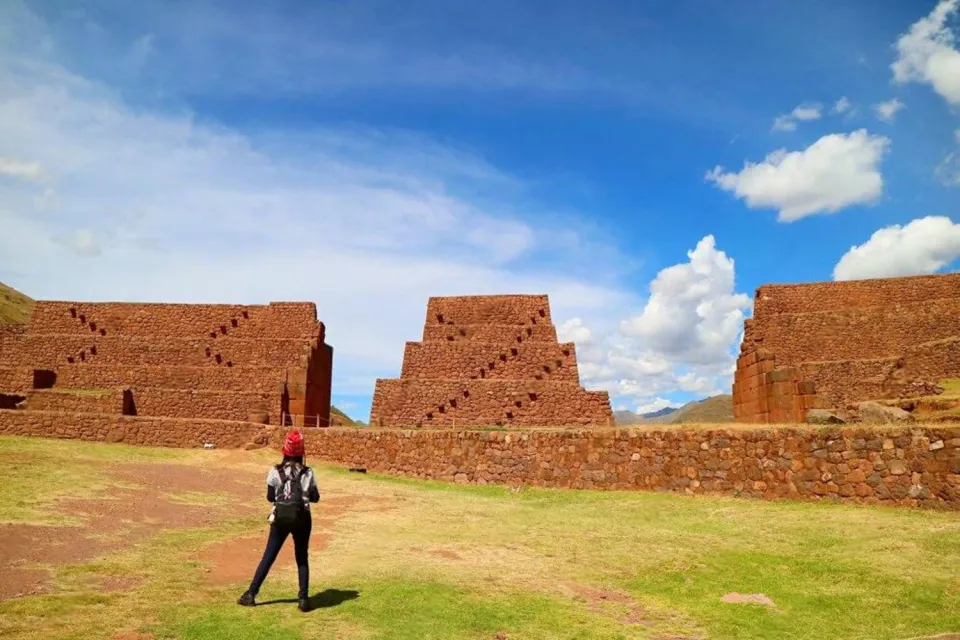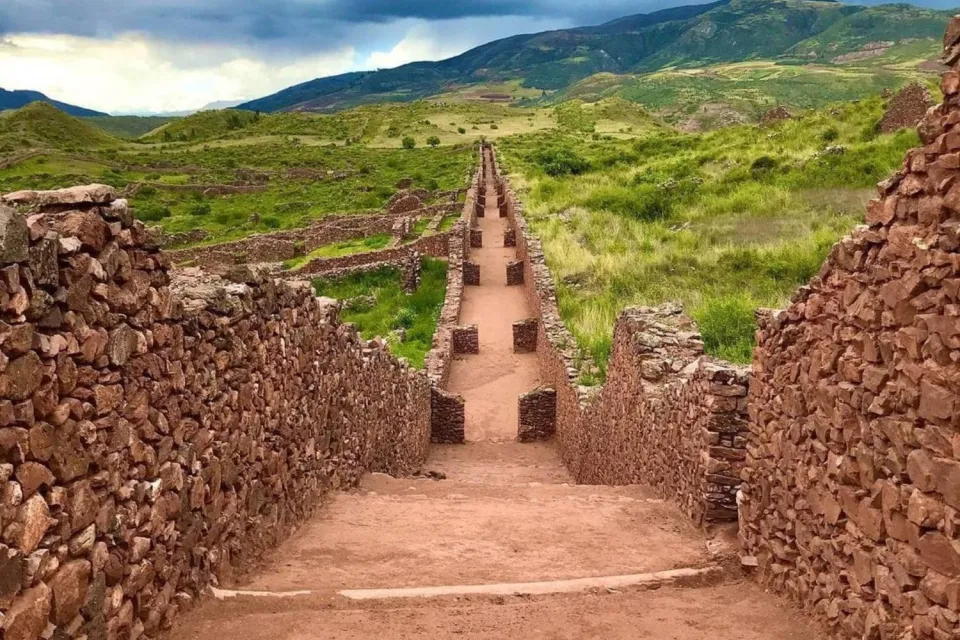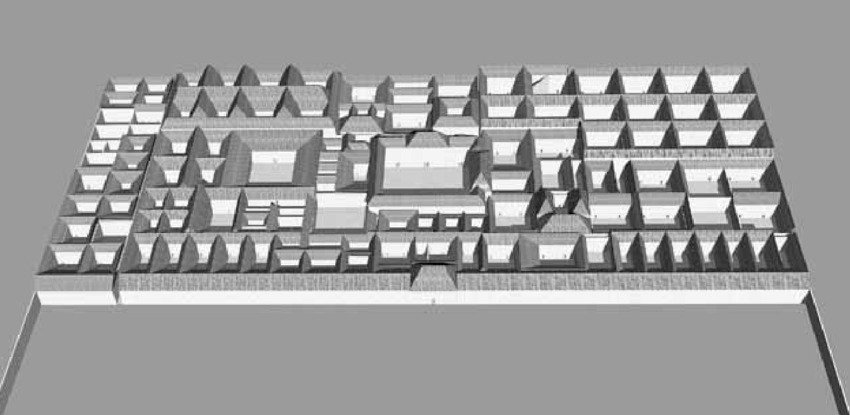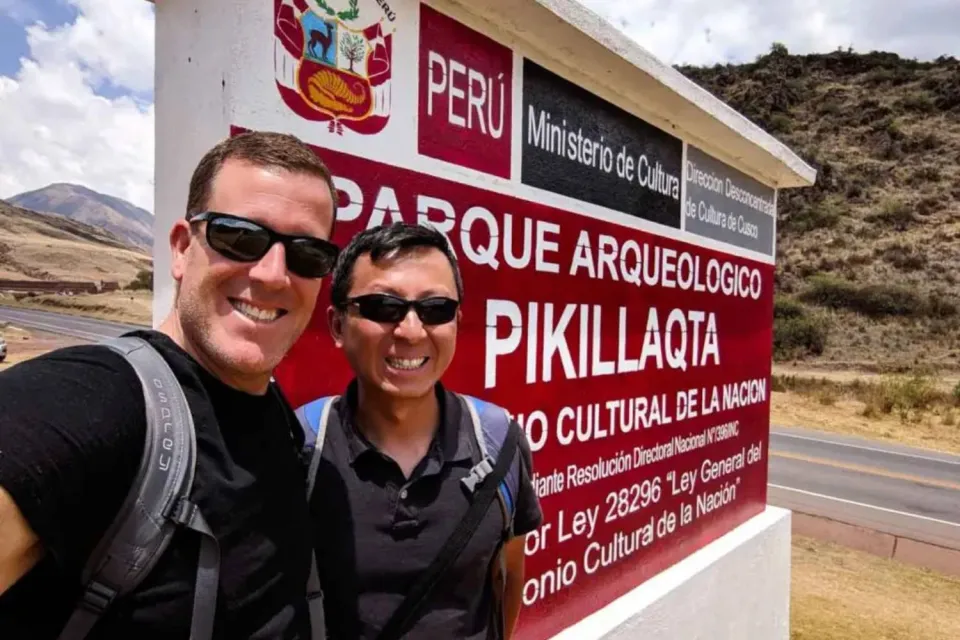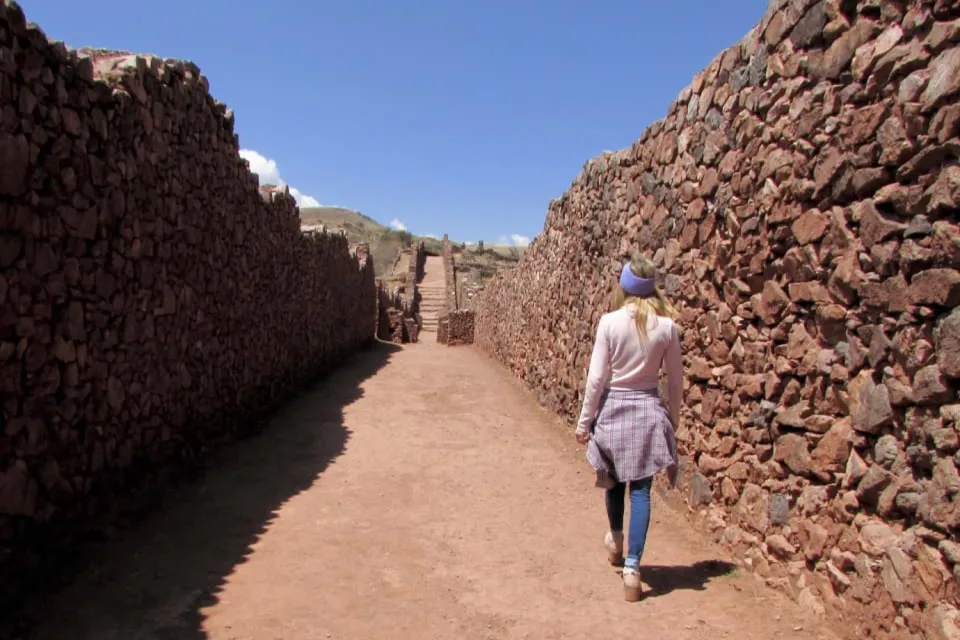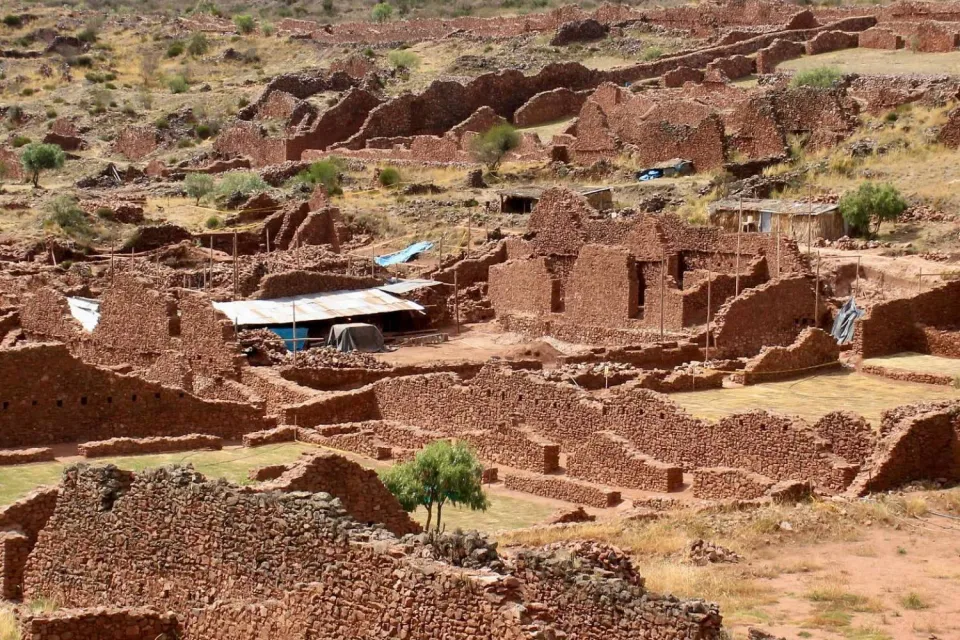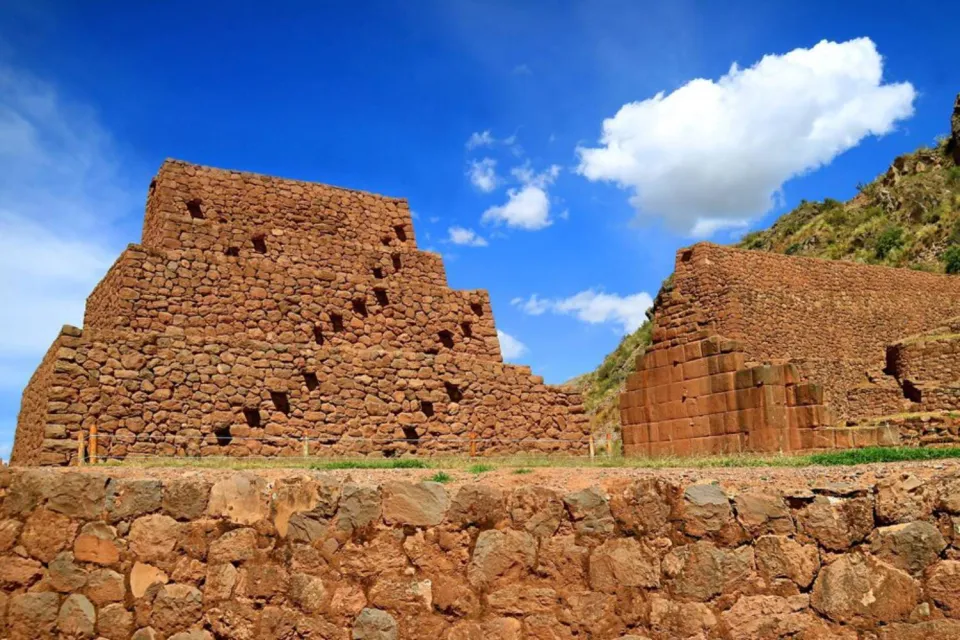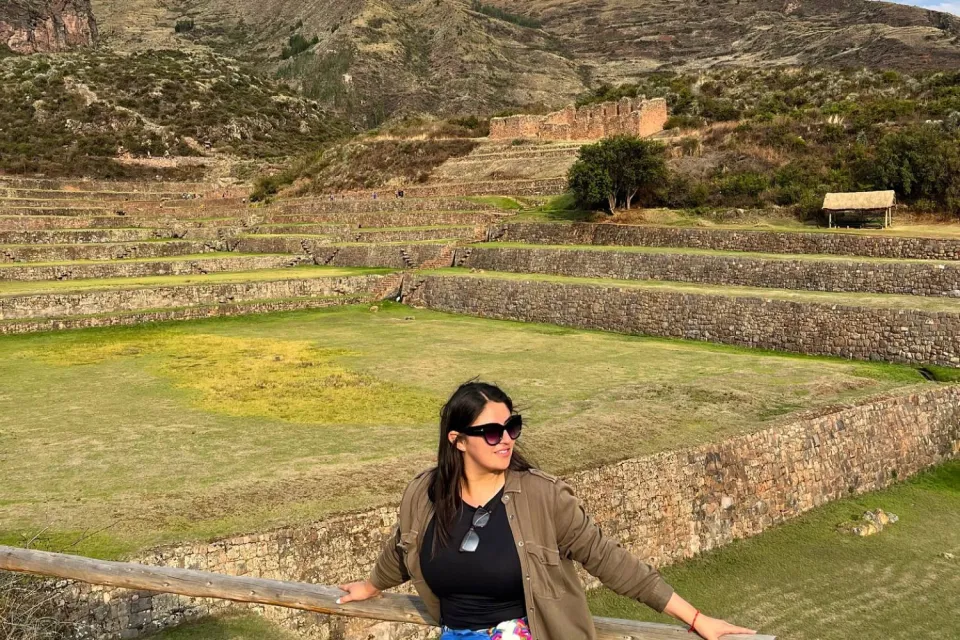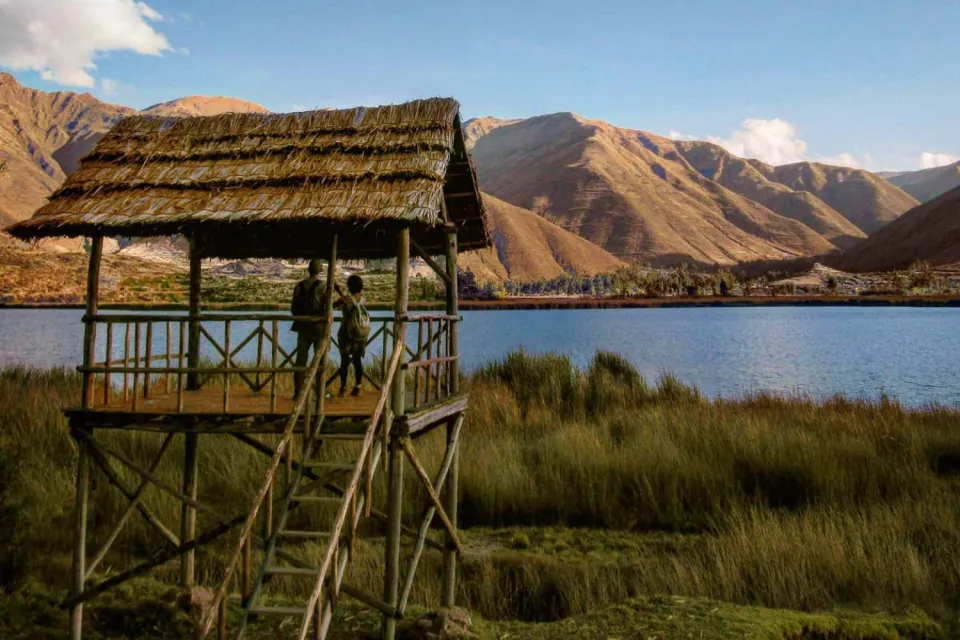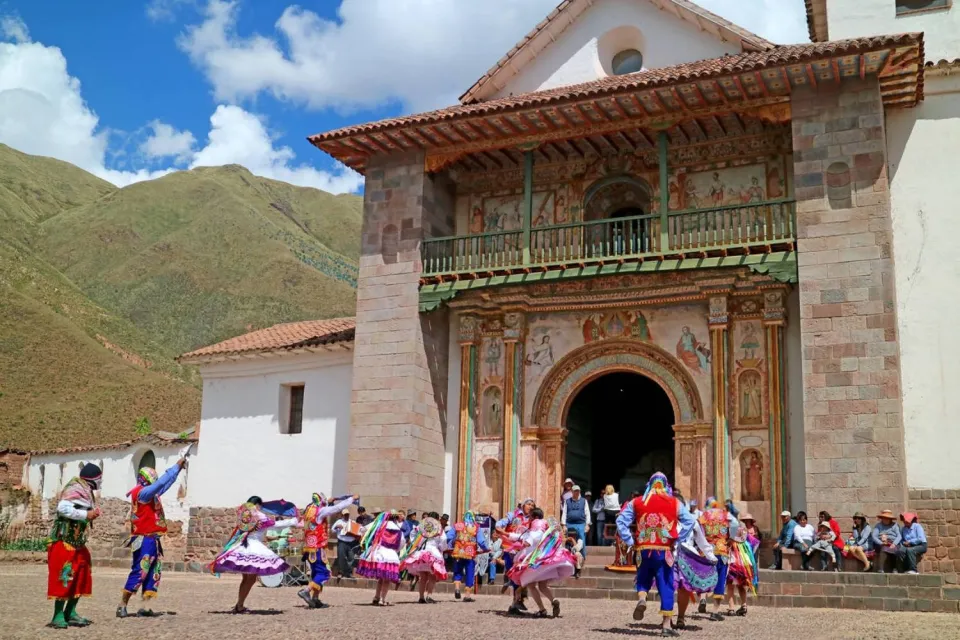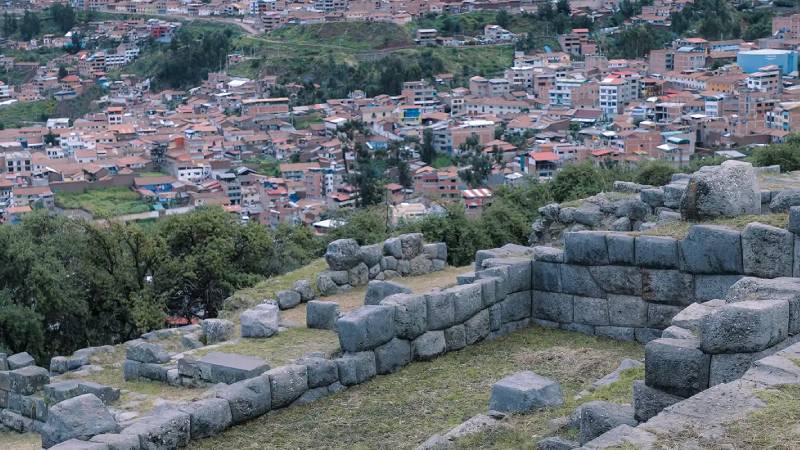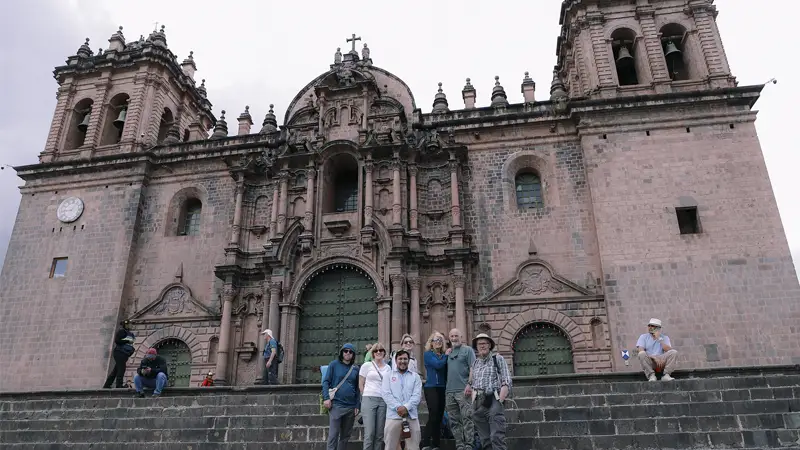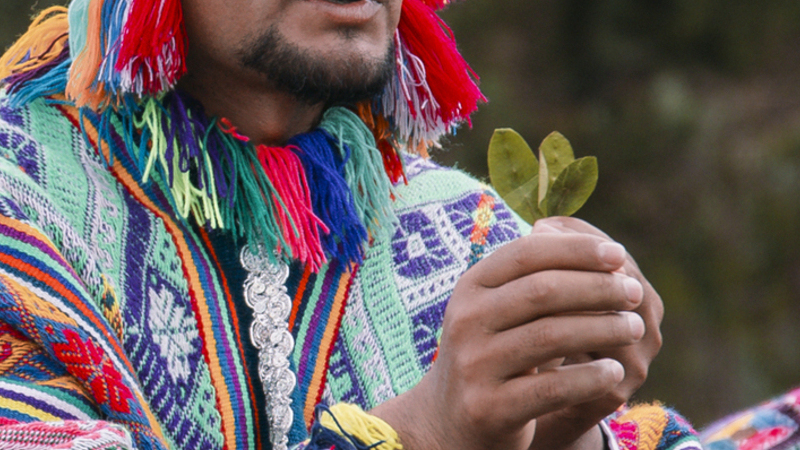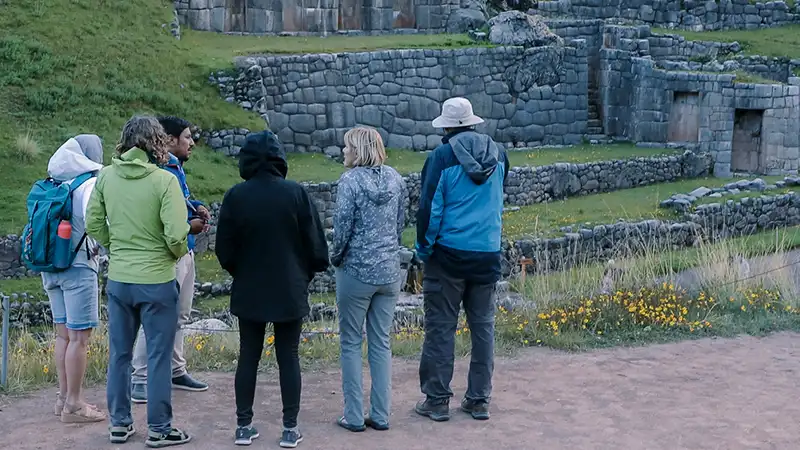Imagine an empire so powerful that it dominated the Andes before the Incas even existed. That was the legacy of the Wari, and Pikillacta was its stone enigma, a city that still whispers secrets of a grand past.
A city planned with mathematical precision that still baffles archaeologists. How did its inhabitants manage to design such an advanced urban center? Why did they abandon it? Read on and discover the enigma of this lost civilization.
What is Pikillacta?
Pikillacta is an archaeological site in Peru that extends over 50 hectares and was an important administrative and residential center of the Wari culture between the 6th and 9th centuries.
Its grid layout is notable for the presence of more than 700 buildings, including dwellings, warehouses, agricultural terraces and sophisticated water systems.
Surrounded by a wall, the site exhibits a well-organized urban design, with streets that efficiently structure the space.
What makes it so special?
Precisely planned city
- The Wari designed Pikillacta with exceptional pre-Inca urban planning.
- They built straight and wide streets, organizing sectors for housing, warehouses and temples.
- They built stone and mud walls that reached up to 12 meters high in some areas.
One of the largest of the Wari cities
- Pikillacta housed up to 10,000 people at its peak.
- Its design reveals a clear military and administrative influence, which made it a center of regional power.
- Unsolved mysteries Archaeologists have found no aqueducts or water sources inside the city.
- Researchers still cannot determine with certainty why people abandoned it before the Incas arrived.
Spectacular views and strategic location
- From Pikillacta there are impressive views of the South Valley and the Huacarpay Lagoon.
- The Incas took advantage of its location to establish a base for observation and territorial control.
Connection with other archaeological sites
- Very close to Pikillacta, the Incas reused Rumicolca, an imposing stone gate, as a checkpoint on the road to Cusco.
History of Pikillacta
Pre-Inca Period
The Marcavalle and Chanapata cultures inhabited Pikillacta, which developed from the Preceramic Period (1000 BC).
The first families that inhabited this sub-basin were Choaquepukio, Minaspata and Batan Orqo, whose main activity was pastoralism.
Years later, the Wari culture inhabited the area and brought Pikillacta to its maximum splendor between 600 A.D. and 1000 A.D., expanding to the southern valley of Cusco.
In Pikillacta, the Waris established a large administrative, residential and ceremonial center.
They were the first to develop highly advanced urban planning, and Pikillacta is tangible proof of this.
Inca Period
During the Late Horizon, the Muyna and Pinagua people lived in the region until the Incas arrived in the 13th century.
In 1200 A.D., influential Inca families emerged, and during this period, the Incas expanded their territory into four regions of their own.
Although the Incas dominated the area until 1438 AD, they did not use it as a main center of administration.
Colonial Period and Present Day
With the Spanish invasion, people abandoned Pikillacta, and its architecture suffered damage, just like many other structures in the Cusco Valley.
The conquistadors destroyed most of the representations and established corregimientos and encomiendas.
In addition, they distributed land among the colonists, who settled in the area and formed haciendas.
Today, it is a key tourist attraction in the South Valley of Cusco, for its great importance as the administrative center of the Wari culture.
Meaning of Pikillacta
The name Pikillacta comes from two Quechua words: piki, which means “flea”, and llaqta, which means “village”.
Thus, a common interpretation is “town of fleas” or “small town”.
However, some researchers propose another explanation, pointing out that piki can also mean “light”, “fast” or “swift”, in reference to the agility of its ancient inhabitants.
Under this interpretation, Pikillacta could be translated as “Lightly Built Village”. It is known that, in Inca times, its name could have been “Muyuna” (circuit) or “Muyna” (bad-tempered").
Important Findings at Pikillacta
In 2018, research work was carried out in which several significant objects were found:
- 05 Offering contexts
- 06 Miniatures of metal such as copper and silver
- 109 miniature sculptures carved from malacological material.
- 14 warriors with weapons and 09 without weapons
- 08 pieces of mullu (Spondylus princeps).
- 02 whistles carved in malacological material.
- Copper and silver plates
- Scepter, possibly the insignia of a ruler or member of the Wari elite.
What to see inside the Pikillacta?
Inside the archaeological center of Pikillacta you will find these impressive places that you should not forget to visit:
The main square of Pikillacta
A large space surrounded by 11 kanchas used in ceremonies, 8 are at the west end and the others to the east.
This square is located in sector 3 and was used for social activities. It is believed that it was also used for ceremonies.
Perimeter wall
Pikillacta is surrounded by a wall up to 12 meters high and 1.50 meters wide.
It served as protection and defense of the site. Currently, this structure is well preserved.
Thanks to the wall, Pikillacta is divided into four sectors, facilitating its internal organization.
In addition, it has niches, overhangs, windows and shelves, characteristic architectural elements of the construction.
Warehouses or rooms
In Pikillacta there are 501 small semicircular structures, used as warehouses and known as qolqas or rooms.
These constructions are organized in orderly rows, and each one has a door and access to the front street.
According to Gordon MacEwan, these structures may have served as living quarters, forming a residential area.
Kanchas
These are found throughout the archaeological center of Pikillacta. They are rectangular buildings with straight corners and residential functions.
Canchones
There are 12 large spaces, with measures of 400 to 600 meters, which have an irregular shape, without being perfect square.
It is believed that these spaces could have functioned as corrals, although more research is still needed to confirm their use.
Pikillacta Site Museum
To the left of the entrance to the archaeological center is a paleontological and archaeological collection.
This space exhibits maps, photographs and cultural goods found and recovered at the site.
In addition, here you can see the remains of a glyptodon, a prehistoric animal, along with its carapace, dating from approximately 30 million years ago.
Archaeological sites that also form part of Pikillacta
These archaeological sites are part of the Pikillacta Archaeological Center, but are located in neighboring areas.
Archaeological site of Choquepujio
Archaeological complex of two floors, with platforms and platforms. It also has water channels and funerary structures.
It is located on the left bank of the Huatanay River and, after Pikillacta, is one of the most important settlements in the area.
The doorway of Rumiqolqa
They are huge pyramidal stones with rectangular bases, associated with water channels, stairways and the Inca Trail (Qollasuyo).
In Inca times, this site functioned as a checkpoint in the South Valley. The meaning of Rumiqolqa is “stone steps”.
The Amarupata terraces
It is a group of agricultural terraces located at the southern end of Lucre, near the town, in the lower part of the Qosqoqhahuarina hill.
They are still in use today by the community's inhabitants.
Urpikancha
Urpikancha is a group of rectangular enclosures associated with high quality terraces, walls and canals.
It is located in a rugged area, on the eastern side of the Huacarpay lagoon.
Kuntuqaqa
Kuntuqaqa is made up of funerary structures attached to a rock formation.
It is located on the left bank of the Huatanay River, on the cliff of the Raqchi hill.
Its constructions were made with lithic elements of smaller size, boulders and mud mortar.
Tanta Estancia
Tanta Estancia is composed of rectangular and circular enclosures with access openings and niches.
It is located on the slopes of the Uchuy Balcón hill, south of Pikillacta. These constructions belong to the Inca period.
Legends and important facts of Pikillacta
Legends of Pikillacta: Sumac T'ika
Like all ancient archaeological centers, Pikillacta is surrounded by myths and legends. The best known is the legend of Sumac T'ika, which tells the story of an Inca princess and her two suitors.
The story begins with the kuraka Rumichaca, who had a daughter of marriageable age. Seeing an opportunity to benefit Pikillacta, he decided that only the one who could bring water to the village could marry her.
Two suitors accepted the challenge: Auqui T'ito, from Jaquijahuana, and Atoq Rimachi, from the Altiplano.
Both began the construction of their respective canals, but only Auqui T'ito succeeded, since his rival encountered difficulties and was unable to complete the work.
The test completed, the kuraka Rumichaca granted the hand of Sumac T'ika to Auqui T'ito, celebrating a great wedding ceremony.
The largest room in Pikillacta was prepared for the newlyweds, but on the wedding night, they were locked in the room and devoured by a multitude of fleas.
After that tragic event, Kuraka Rumichaca changed the name of the place from Moyna to Pikillacta.
Did you know that?
There is a staging of the legend of Sumac T'ika and it is known as Sumaq T'ika Raymi festival.
In this staging, you can witness the ceremony to the cult of water, it takes place on November 27th of each year.
Location of Pikillacta
Pikillacta is located in the district of Lucre near the town of Huacarpay, province of Quispicanchi, department of Cusco.
It is located 30 km southeast of Cusco, at an altitude of 3,250 meters above sea level.
It is located in the Lucre Valley micro-basin, between the tributaries of the Huatanay and Vilcanota rivers, with privileged views of the Huacarpay Lake.
How to get to Pikillacta from Cusco?
To get to Pikillacta from Cusco, you have several options depending on your budget and comfort level:
1. By cab or private tour
You can take a cab from Cusco to Pikillacta in a journey of approximately 1 hour and 10 minutes.
The cost of the trip varies between 80 and 120 soles, and most cabs accept up to four passengers.
2. By public transportation (economical option)
Go to Avenida de la Cultura, where buses leave for Urcos or Huacarpay.
Ask the driver to drop you off in Pikillacta. The fare costs between 5 and 7 soles, and the trip takes about an hour.
From the highway, walk 5 to 10 minutes to the entrance of the archeological site. .
3. On a tour of the South Valley
Another option is to hire a private tour that includes Pikillacta along with other nearby sites, such as Tipón and Andahuaylillas.
This alternative allows you to visit more places in a single tour, with the comfort of a guide and organized transportation.
Weather in Pikillacta
The climate in Pikillacta is mostly dry and temperate, with an average annual temperature of 14.1°C (57°F). This varies slightly according to the two seasons of the year:
Dry season
During this season, the days are sunny and the skies are clear, with a fairly stable climate. Daytime temperatures range from 15°C to 22°C, while at night they can drop to 0°C.
Rainy season
In this season, especially in January and February, rains are frequent, leaving slippery trails but vibrant green landscapes.
Daytime temperatures are cooler, between 12°C and 18°C, and at night they drop to a range of 5°C to 8°C.
What is the best season to visit Pikillacta?
The best time to visit the site is between May and October, when the weather is drier and the skies remain clear.
Flora and Fauna
Flora
Pikillacta is home to a great diversity of plant species, among which the following stand out:
- K'antu (Cantua buxifolia)
- Molle (Schinus molle)
- Gigantón (Echinopsis cuscoensis)
- Quisuar (Buddleja incana) and more species.
Fauna
The archaeological site and its surroundings are also habitat for several species of fauna, including:
- Birds: ruffed grebe (Rollandia rolland), Wallata or Andean goose (Chloephaga melanoptera), Leqecho (Vanellus resplendens).
- Mammals: Fox (Ducycion Culpaeus), Vizcacha (Lagidium peruanum inca), Osqollo or Pampas Cat (Felis colocolo pajarero).
Tips During Your Visit
- Firstly, leave early, bring your identity documents or passport in case of foreigners.
- Secondly, wear adequate clothing, comfortable shoes or trekking shoes to make the tour.
- Wear a hat or cap to avoid sunstroke.
- Sunglasses and sunscreen.
- Use the accesses and marked trails during the tour.
- Once at the site, avoid touching, leaning or climbing on the walls, as this generates deterioration and may cause some type of accident.
- Do not throw garbage and solid waste, leave it in a container.
- The conservation of the archaeological heritage depends on each one of us, respect the monuments.
Nearby Attractions
Tipón
Tipón archaeological park showcases impressive Inca agricultural terraces and a sophisticated system of water canals.
Additionally, people believe it served as an important ceremonial center dedicated to water.
Its hydraulic engineering continues to function to this day, demonstrating the advanced Inca knowledge of water management.
The southern Cusco valley tour also includes this center.
Huacarpay Lagoon
The Huacarpay Lagoon is a beautiful wetland that is part of the Lucre-Huacarpay Wildlife Sanctuary. It is home to several species of birds, both local and migratory.
Its landscape combines calm waters and Andean vegetation, offering an ideal environment for bird watching and photography.
San Pedro Apostle of Andahuaylillas
Known as the Sistine Chapel of America, the church of San Pedro de Andahuaylillas dazzles with its impressive baroque art.
Built in the 16th century, its simple colonial façade contrasts with an interior richly decorated with frescoes, gilded altarpieces and paintings of the Cusco School.
Visitors can admire its carved wooden ceiling covered with gold leaf, as well as its antique organ, one of the oldest in America.
In addition, this church is part of the Andean Baroque Route, a tour that highlights the fusion of European and indigenous art in Peru's colonial temples.
Frequently Asked Questions
- How much does the entrance fee to Pikillacta cost?
Two options of the Cusco Tourist Ticket include the entrance fee:
- Integral tourist ticket whose cost is 130 soles for tourists and 70 soles for Peruvians.
- Partial tourist ticket II which cost 70 soles for tourists and 40 soles for Peruvians.
- How long does the visit to Pikillacta last?
The tour of the archaeological site can take between 1 and 2 hours.
- What are Pikillacta's opening hours?
Pikillacta is open to the public from Monday to Sunday, from 7:00 a.m. to 6:30 p.m.
- Who built Pikillacta?
Pikillacta was built by the Wari culture between the 6th and 9th centuries.
- Can I visit Pikillacta without a guide?
Yes, but a guide is recommended for a better experience.
- Who elaborated the chronology of Pikillacta?
The North American researcher Gordon McEwan elaborated the first chronology of Pikillacta.
- What are the typical drinks and beverages of Pikillacta?
Among the typical dishes are the following:
- Picante a la lucreña.
- Wheat Phata.
- Jaucha of turnip.
- Tarwi uchu.
- Drinks based on quinoa and corn
- Are there nearby accommodations for camping?
If you want to camp near Pikillacta, there are the options of
- Huacarpay Lagoon
- Pikillacta
- The gate of Rumicolqa
- Is there an architectural parallel between pikillacta and viracochapampa?
Yes, there is a parallel because both are urban centers of the Wari culture with similar planning. Such as rectangular structures, grid streets and the use of stone with mud mortar and walled enclosures.
Pikillacta is an archaeological jewel that continues to reveal its mysteries. Whether for its history, its architecture or its legends, it is a must-see destination in the South Valley of Cusco.
Do you dare to visit it and discover its secrets?

